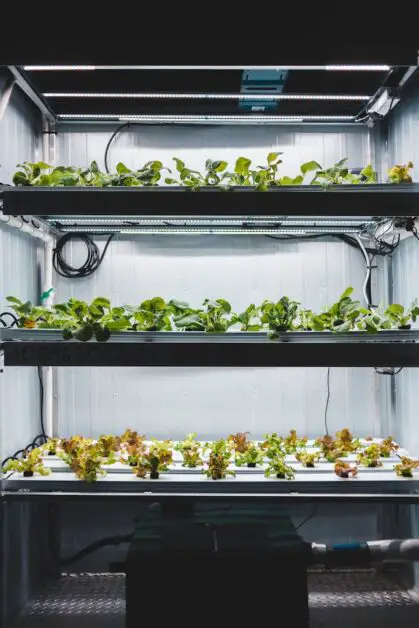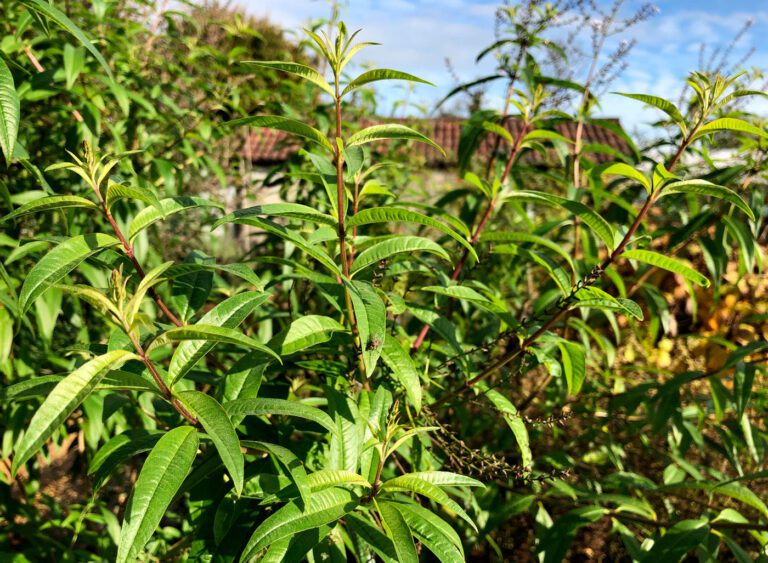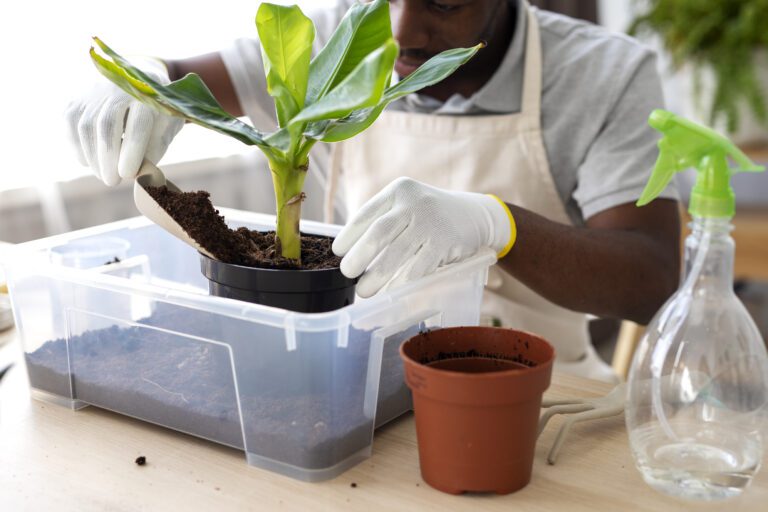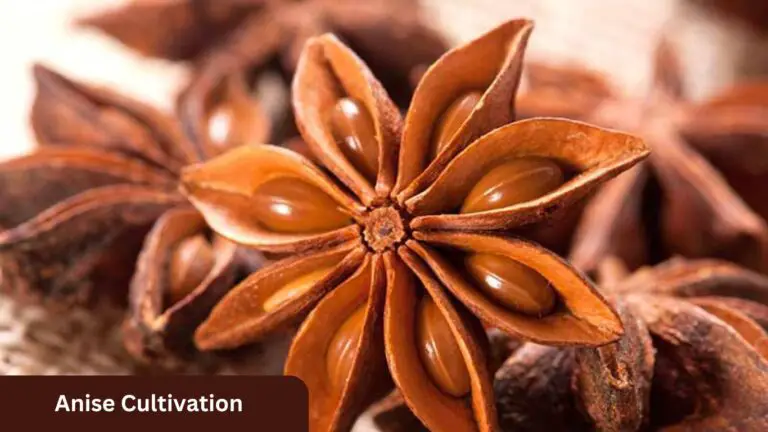How to Make a Pallet Garden: 4 Step-by-Step Guide to Building a Gorgeous and Eco-Friendly Garden with Pallets
Table of Contents
pallets utilizing Spaces: Creating Vertical Planting to maximize vertical space and create a lush green wall or trellis for climbing plants.
Utilizing pallets as a vertical planting space is not only a creative way to maximize limited garden areas but also a practical solution for creating a lush green wall or trellis for climbing plants. By repurposing pallets, gardening enthusiasts can transform their spaces into flourishing vertical gardens.
One of the key advantages of using pallets is their versatility. They can be easily adapted to suit different plant types and sizes, offering endless possibilities for customization. Whether you dream of a vibrant wall of flowers or a bountiful crop of vertical vegetables, pallets can be tailored to meet your specific gardening needs.
Not only do pallet gardens save valuable ground space, but they also provide an excellent growing environment for climbing plants. The slats on the pallets offer natural support for vines to attach themselves to, eliminating the need for additional trellises or supports. This not only creates a visually stunning display but also ensures that the plants have ample support to reach their full potential.
In the following sections, we will explore the various techniques and considerations involved in creating and maintaining a successful vertical garden using pallets. From soil selection and preparation to proper planting techniques and efficient irrigation systems, we will delve into every aspect of pallet gardening to help you achieve a thriving, vertical oasis. So, let’s get started and unlock the possibilities of creating vertical planting spaces with pallets!
| Advantages of Pallet Gardens | Key Information |
|---|---|
| Versatility and Adaptability | – Pallets can be easily adapted to accommodate various plant types and sizes. |
| Maximizing Limited Garden Areas | – Pallets offer a practical solution for maximizing garden space, making them suitable for small or limited areas. |
| Transforming Spaces into Vertical Gardens | – Repurposing pallets allows gardening enthusiasts to transform spaces into vertical gardens, providing a lush and green environment. |
| Saving Ground Space with Vertical Gardens | – Pallet gardens save valuable ground space, creating a green wall or trellis for climbing plants. |
| Natural Support for Vines | – The slats on pallets provide natural support for vines, eliminating the need for additional trellises or supports. |
| Customization for Specific Needs | – Vertical gardens using pallets can be customized to meet specific gardening needs, whether for flowers, vegetables, or herbs. |
| Importance of Soil Selection and Preparation | – Proper soil selection and preparation are crucial for successful pallet gardening. |
| Efficient Irrigation Systems | – Consider efficient irrigation systems to ensure proper watering of plants in a vertical garden setup using pallets. |

Soil Selection and Preparation: Expert advice on choosing the right soil, improving drainage, and creating a healthy growing environment for your plants.
Choosing the right soil is crucial for the success of your pallet garden. By selecting a soil that is rich in nutrients and has appropriate drainage, you can create a healthy growing environment for your plants. It is important to note that not all soils are suitable for every type of plant, so understanding the specific needs of your chosen plants is essential.
One factor to consider when choosing soil is its texture. Sandy soils are well-drained but often lack essential nutrients, while clay soils hold moisture but can become compacted. A loamy soil, which is a mixture of sand, silt, and clay, provides a good balance of drainage and water retention. Conduct a soil test to determine its pH level and nutrient content, as different plants thrive in different pH ranges.
Improving drainage is another crucial aspect of soil preparation. To enhance drainage, you can add organic matter like compost or well-rotted manure to the soil. This helps to break up clay soils and increase water infiltration in compacted soil. Additionally, incorporating perlite or vermiculite can help improve aeration and prevent waterlogging.
Creating a healthy growing environment for your plants also involves ensuring that the soil has adequate nutrients. Depending on the requirements of your plants, you may need to amend the soil with fertilizers or organic matter. This will provide the essential nutrients needed for optimal growth and development.
By carefully selecting the right soil, improving drainage, and enriching the soil with nutrients, you can create an ideal growing environment for your plants in your pallet garden. Remember to consider the specific needs of your plants and regularly monitor the soil’s pH and nutrient levels to ensure the best possible conditions for their growth.

Planting Techniques for Pallet Gardens: Step-by-step guidance on planting seeds, seedlings, or transplants in your pallet garden for optimal growth.
Planting techniques are essential for ensuring the optimal growth of seeds, seedlings, or transplants in your pallet garden. By following a step-by-step guidance, you can create an environment that promotes healthy plant development and maximizes your garden’s potential.
Firstly, it is crucial to prepare your pallet garden before planting. Begin by cleaning the pallet, removing any nails or staples, and sanding down any rough surfaces. Once the pallet is ready, line the back and sides with landscape fabric, ensuring that it extends beyond the edges to prevent soil erosion. Next, fill the pallet with a high-quality potting mix, making sure to evenly distribute it throughout the planting area.
To plant seeds, simply follow the recommended depth and spacing guidelines specified on the seed packet. Gently press the seeds into the soil, ensuring they make good contact for proper germination. For seedlings or transplants, create small holes in the soil using your finger or a trowel. Carefully place the seedling’s root ball into the hole, making sure it is at the same level as the surrounding soil. Firmly press the soil around the base of the seedling to provide stability.
Once your plants are in place, water them thoroughly, ensuring that the soil is evenly moist. It is essential to monitor moisture levels regularly and adjust watering accordingly to prevent over or under-watering. Providing your pallet garden with adequate nutrients is also vital for optimal growth. Fertilize your plants according to their specific needs, following the instructions on the fertilizer package.
By implementing these planting techniques, you can cultivate a vibrant and flourishing pallet garden that will bring beauty and greenery to any space. But our journey does not end here; next, we will explore different watering methods and efficient irrigation systems to ensure your pallet garden remains adequately hydrated.

Watering and Irrigation Systems: Exploring different watering methods and efficient irrigation systems to keep your pallet garden adequately hydrated.
Watering and irrigation systems play a crucial role in ensuring the health and vitality of your pallet garden. With the right methods and systems in place, you can keep your plants adequately hydrated and thriving. Let’s explore some different watering techniques and efficient irrigation systems that can help you achieve optimal results.
One popular watering method for pallet gardens is drip irrigation. This system delivers water directly to the plants’ root zones, minimizing evaporation and reducing water waste. By using drip emitters or micro-sprayers strategically placed throughout your garden, you can provide a steady and controlled water supply to each plant. This method not only conserves water but also promotes healthier root growth and reduces the risk of foliar diseases.
Another effective watering method for pallet gardens is the use of self-watering containers or reservoir systems. These containers come with a built-in reservoir that holds water, allowing the plants to draw moisture as needed. Self-watering containers are particularly beneficial for busy gardeners or those with limited access to water sources. They provide a consistent water supply and prevent overwatering or underwatering, ensuring optimal hydration for your plants.
In the next section, we will delve further into the benefits and considerations of these watering methods, as well as explore additional efficient irrigation systems that can enhance your pallet garden’s water management. Join us as we take a closer look at how to keep your plants thriving by providing them with the right amount of hydration in a sustainable and efficient manner.
How often should I water my pallet garden?
The frequency of watering your pallet garden will depend on various factors such as the type of plants, weather conditions, and the moisture retaining capacity of the soil. However, as a general guideline, it is recommended to water your pallet garden every 1-2 days during warmer months and adjust accordingly based on the soil moisture levels.
What are some efficient watering methods for a pallet garden?
There are several efficient watering methods you can use for your pallet garden. Some popular options include drip irrigation systems, soaker hoses, or even hand watering using a watering can or hose with a gentle spray nozzle. These methods help deliver water directly to the roots, minimizing evaporation and water waste.
Can I use a self-watering system for my pallet garden?
Yes, you can definitely incorporate a self-watering system into your pallet garden. Self-watering systems, such as the use of wicking containers or reservoir planters, can help maintain a consistent moisture level in the soil by allowing the plants to absorb water as needed. This can be a convenient option, especially if you have limited time for watering or are going on vacation.
How can I prevent over-watering my pallet garden?
Over-watering can be detrimental to the health of your pallet garden. To prevent this, it is important to monitor the moisture levels in the soil regularly. One way is to check the soil’s moisture by sticking your finger about an inch into the soil. If it feels moist, hold off on watering. Additionally, using well-draining soil and ensuring proper drainage in your pallet garden can help prevent excess water retention.
Are there any water-saving tips for maintaining a pallet garden?
Absolutely! To save water while keeping your pallet garden adequately hydrated, consider mulching the soil surface with organic materials like straw or wood chips. This helps to reduce evaporation and retain moisture in the soil. Additionally, grouping plants with similar water requirements together and adjusting your watering schedule based on weather conditions can also help conserve water.
Can I use rainwater to water my pallet garden?
Yes, using rainwater is an excellent and sustainable way to water your pallet garden. Collecting rainwater in a barrel or container allows you to harness nature’s free resource and avoid using treated tap water. Just ensure that the rainwater is clean and free from pollutants before using it on your plants.

Beck Wakeford is a dedicated writer at SouthElMonteHydroponics, with a fervent enthusiasm for agriculture and technological innovation. Armed with a degree in Agricultural Engineering from a leading university, Beck specializes in hydroponic systems design, automation, and optimization. Their passion for merging traditional farming with cutting-edge technology drives them to explore novel solutions for sustainable food production. Beck’s expertise and keen interest in the intersection of engineering and agriculture make them a valuable asset in the quest for efficient and eco-friendly farming practices. Through their writing, Beck aims to inspire others to embrace the potential of hydroponics in shaping a more sustainable future.






